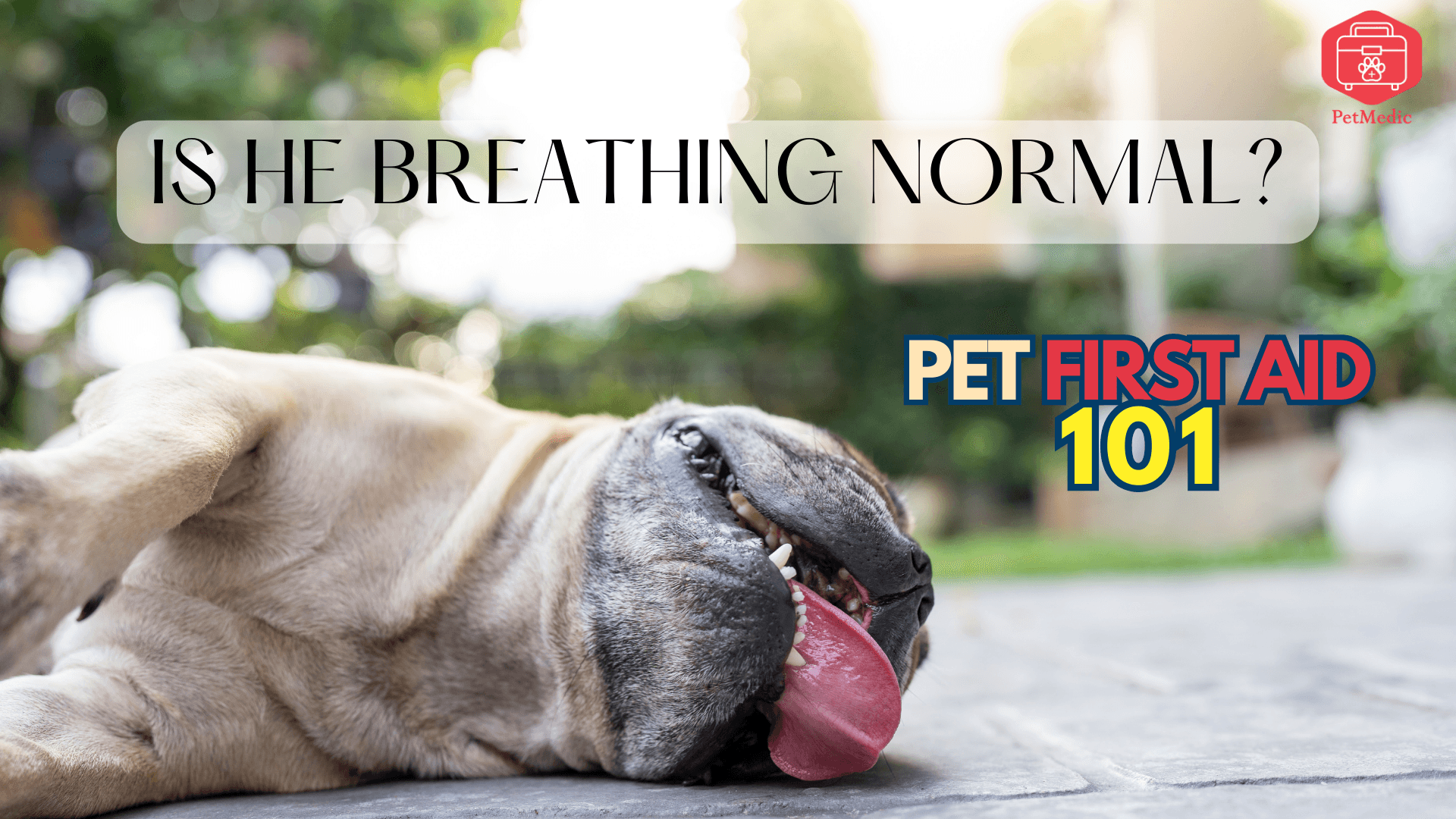As a veterinarian, I often see cases where breathing problems in pets go unnoticed until they become life-threatening. Unlike humans, dogs and cats don’t show obvious distress until respiratory issues are severe. Recognizing abnormal breathing early can help prevent serious complications.
What Is Normal Breathing in Pets?
Before identifying abnormal breathing, it’s important to understand what normal looks like:
- Respiratory Rate:
Dogs: 15–30 breaths per minute
Cats: 20–40 breaths per minute - Breathing Pattern: Smooth, quiet, and effortless.
- Mouth Position: Cats should always breathe through their nose. Dogs may pant, but normal panting should stop when they are at rest.
- Gum Color: Pink gums indicate good oxygen levels.
Signs of Abnormal Breathing in Dogs and Cats
1. Increased Respiratory Rate (Tachypnea)
- Breathing faster than normal while at rest.
- Dogs or cats taking more than 40 breaths per minute when calm or rest.
Possible Causes:
- Pain, fever, or anxiety
- Heart disease
- Lung disease or fluid in the lung / thoracic cavity (pulmonary oedema – eg in case of heart disease / pleural effusion – eg in case of FIP or hemothorax)
- Heat stroke
2. Labored Breathing (Dyspnea)
- Using belly muscles to breathe
- Flared nostrils or open-mouth breathing in cats
- Head and neck stretched forward to breathe
- Loud, raspy, or wheezing sounds
Possible Causes:
- Pneumonia or lung infection
- Asthma (common in cats)
- Heart failure causing fluid buildup
- Tumors or obstructions in the airway or inside the lung
3. Open-Mouth Breathing in Cats
- Unlike dogs, cats should never pant unless they are extremely stressed or overheated.
- If your cat is breathing with an open mouth at rest, this is an emergency. (ALERT)
Possible Causes:
- Severe respiratory distress
- Heart disease (such as hypertrophic cardiomyopathy)
- Asthma attack
4. Blue or Pale Gums (Cyanosis)
- Normal gums should be pink.
- Blue, purple, or very pale gums indicate severe oxygen deprivation.
Possible Causes:
- Severe respiratory or heart failure
- Blocked airway
- Shock
5. Noisy Breathing (Stridor, Wheezing, or Honking Sounds)
- High-pitched wheezing suggests a narrowed airway.
- Honking cough is often seen in dogs with collapsed trachea.
- Snorting or gasping sounds may indicate a foreign object blocking the airway.
Possible Causes:
- Brachycephalic (flat-faced) breed breathing issues (e.g., Bulldogs, Pugs, Persians)
- Tracheal collapse (common in small breed dogs)
- Allergies or asthma
- Foreign object stuck in throat
6. Coughing with Difficulty Breathing
- A persistent cough along with difficulty breathing is a red flag.
- Dogs with heart disease may have a soft, chronic cough, especially at night.
- Cats with asthma may have coughing fits that sound like hairballs but with no fur produced.
Possible Causes:
- Heart failure
- Kennel cough or respiratory infections
- Asthma (in cats)
- Lung disease
What to Do If You Notice Abnormal Breathing
- Stay calm: Your pet can sense your anxiety, which may make their distress worse.
- Check gum color: If gums are blue or pale, seek emergency care immediately.
- Keep them cool and quiet: Reduce activity and avoid stress.
- Do NOT force water or food: If they are struggling to breathe, forcing anything into their mouth could worsen the situation.
- Seek veterinary help ASAP: Breathing issues are often life-threatening emergencies. If in doubt, go to the vet immediately.
- Please do let your veterinarian know your pet is in respiratory distress so they can be prepared
Take Home Message
Breathing problems in pets should never be ignored. If your pet is breathing fast, struggling to breathe, or showing any concerning signs, don’t wait—seek veterinary care right away. Early detection and treatment can make a huge difference in your pet’s survival and quality of life.

